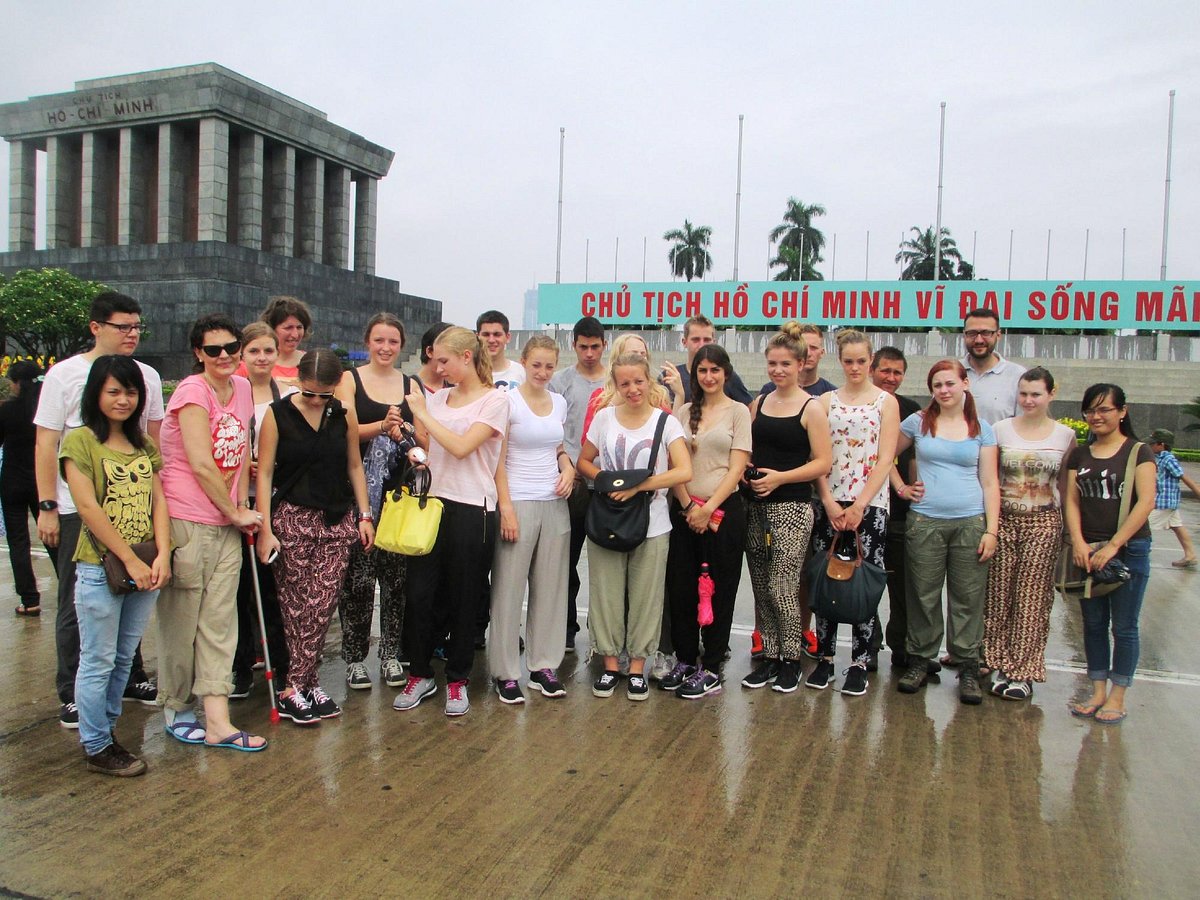Ho Chi Minh Complex & The Temple of Literature (Half Day)
Please see the tour details below
Price from $0 / per person
Experience Hanoi like a local and tour the city’s attractions with the kids who live there. Explore Hanoi with 2 famous destinations: Ho Chi Minh Complex & Temple of Literature Tour. See the main city sights, that all provide a great way to get culturally connected.
| Destination | Ho Chi Minh Complex & The Temple of Literature. |
|---|---|
| Departure | Ho Chi Minh Complex |
| Departure Time | Approximately 9:00 am or 2.00 pm |
| Return Time | Approximately 12:00 am or 5:00 pm |
| Included |
Tour guide (available with English speaking local student) |
| Not Included |
Transfer fees (if any) Entrance fees (if any) Personal expenses (foods, drinks, tips). |
Rooms & Amenities
Itinerary
1
Ho Chi Minh Complex and Temple of Literature Private Walking Tour (Half Day)
| Pick-up | Our tour guide will meet you at your hotel |
|---|---|
| Ho Chi Minh’s Mausoleum | Ho Chi Minh’s Mausoleum: where the body of the president is kept. Opening time: 5 days per week, except Monday and Friday. Cold seasons (from November to March) 8:00 a.m – 11:00 a.m Hot seasons (from April to October): 7:30 a.m – 10:30 a.m Closed once per year in October/ November/or December for the body maintenance No camera, cell phone, bare-shoulder T-shirts, or mini skirts are allowed inside |
| Ba Dinh Square | Where Ho Chi Minh’s Mausoleum lies, is a historical site where President Ho Chi Minh read the Independence Declaration of Vietnam on September 2nd, 1945. |
| Ho Chi Minh’s Residence | Refusing to live in the Presidential palace, President Ho Chi Minh lived in a normal electrician’s house nearby. The house has two floors and the beloved President lived here from 1958 until he passed away. |
| One Pillar Pagoda | An ancient pagoda built in 1049 under the Ly Dynasty. There’s an interesting legend referring the construction of the pagoda, telling that King Ly Thanh Tong had this pagoda constructed in the shape of a lotus, based upon his fairy dream, thanks to which he was given a baby boy. Opening time: The pagoda is open daily from 8 a.m. to 5 p.m. Entrance is free. Remember to wear full-length clothes when you visit any pagoda. |
| Ho Chi Minh Museum | The museum was built in the shape of a white lotus flower, which is nearly 20m high, including 3 floors. More than 2,000 documents and show-pieces are displayed, systematically reflecting President Ho Chi Minh’s life and revolution cause since the late 19th century. Coming here, tourists can share a part of Ho Chi Minh’s tough life. After that, you will have time to visit the Temple of Literature – the first University of Vietnam and also the place to worship the Confucius. This is often cited as one of Hanoi’s most picturesque tourist attractions. Originally built as a university in 1070 dedicated to Confucius, scholars, and sages, the building is extremely well preserved and is a superb example of traditional-style Vietnamese architecture. This ancient site offers a lake of literature, the Well of Heavenly Clarity, turtle steles, pavilions, courtyards and passageways that were once used by royalty. Visiting the Temple of Literature you will discover historic buildings from the Ly and Tran dynasties in a revered place that has seen thousands of doctors’ graduate in what has now become a memorial to education and literature. |
| The Temple of Literature. | After that, you will have time to visit the Temple of Literature – the first University of Vietnam and also the place to worship the Confucius. This is often cited as one of Hanoi’s most picturesque tourist attractions. Originally built as a university in 1070 dedicated to Confucius, scholars, and sages, the building is extremely well preserved and is a superb example of traditional-style Vietnamese architecture. This ancient site offers a lake of literature, the Well of Heavenly Clarity, turtle steles, pavilions, courtyards, and passageways that were once used by royalty. Visiting the Temple of Literature you will discover historic buildings from the Ly and Tran dynasties in a revered place that has seen thousands of doctors’ graduate in what has now become a memorial to education and literature. |


